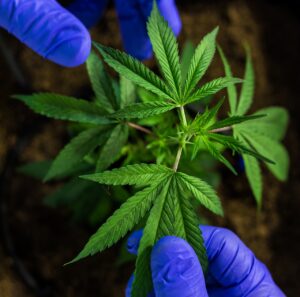Exploring the Landscape of Medical Cannabis Laws in Texas
You’ve likely heard the buzz about medical cannabis laws evolving across the United States. In Texas, it’s a particularly fascinating journey, deeply rooted in a historical context of stringent early legislation dating back to the Marihuana Tax Act of 1937. Over the decades, there’s been a gradual shift towards decriminalization, yet Texas’s laws remain some of the most restrictive. Wouldn’t you like to explore what’s driving these changes, the significant legal cases involved, and what the future might hold for medical cannabis legalization in the Lone Star State?
Early Marijuana Legislation in Texas
Looking into the early marijuana legislation in Texas, you’ll discover a complex history marked by stringent laws and changing societal attitudes towards the drug. The prohibition origins of these laws are deeply rooted in the early 20th century when hemp farming was a common agricultural practice. However, the criminalization of marijuana was often driven more by social factors than by genuine concern for public health.
Influences of racism played a significant role in shaping the legislation. The drug was often associated with Mexican immigrants, fueling racial tensions and resulting in stringent laws. This led to early enforcement measures that disproportionately targeted these communities, reflecting a deep-seated prejudice within the system.
Public perception of the drug was largely negative, influenced by sensationalized media reports and fearmongering. This perception was instrumental in the swift passage of harsh laws against marijuana. The drug was seen as a societal menace, leading to the implementation of heavy penalties for its use and possession.
Despite the historical acceptance of hemp farming, the demonization of marijuana led to its outright prohibition. This initial legislation set a precedent for the evolving laws and attitudes surrounding marijuana in Texas.
The Marijuana Tax Act Influence
Certainly, the Marihuana Tax Act of 1937 had a profound impact on the course of marijuana legislation in Texas, effectively turning its possession and sale into a criminal act by imposing heavy tax obligations. The Tax Act’s Impact was immediate and far-reaching, creating a ripple effect of legal controversies and social ramifications.
Under the Act’s federal influence, Texas followed suit, tightening its own restrictions on marijuana. The economic implications of this were significant. The high taxes deterred many from participating in the marijuana market, drastically shrinking its size and contributing to a black market trade.
The Act also precipitated legal controversies. It was challenged in court for infringing on the constitutional rights of citizens, most notably in the landmark case of Leary v. United States. However, Texas’ strict stance on marijuana remained largely untouched by these legal battles.
The social ramifications of the Act were equally significant. It stigmatized marijuana use, associating it with criminal behavior, and led to the disproportionate incarceration of minority communities. This intensified the debate over marijuana legislation in Texas, setting the stage for the future decriminalization discussions.
Transition to Medical Cannabis Decriminalization
Despite the strict marijuana laws that persisted for decades, a shift in perspective began to emerge in Texas, paving the way for the decriminalization of medical cannabis. This transformation was shaped by several factors, including changing societal attitudes, patient perspectives, and economic considerations.
The decriminalization impact was immediate and significant. It reduced the burden on the legal system, freeing resources for more serious offences. You began to observe fewer arrests and less stigma associated with marijuana use, particularly for medical purposes.
Patient perspectives were pivotal in this shift. You saw an increasing acceptance of marijuana as a legitimate therapeutic option for conditions such as chronic pain and epilepsy. These shifting viewpoints influenced policy changes, despite existing regulatory challenges, such as ensuring product safety and managing distribution.
The economic implications cannot be ignored either. The decriminalization of medical cannabis opened up a new industry, creating jobs and contributing to the state’s economy.
However, this transformation also faced resistance. Some societal attitudes remained resistant, viewing marijuana decriminalization as a slippery slope to broader drug legalization. Despite this, the shift towards decriminalization signifies a notable change in Texas’s approach to medical cannabis.
Significant Legal Cases and Rulings
What role have legal cases and rulings played in the evolution of medical cannabis laws in Texas? They’ve been pivotal, shaping the landscape and providing direction in this complex issue.
The Compassionate Use Act, passed in 2015, was a significant legal development. It allowed the use of low-THC cannabis for patients with intractable epilepsy. However, it faced legal challenges. Critics argued it was too restrictive, leaving many patients without access. Law enforcement, too, grappled with the new law, straddling the line between patient rights and potential misuse.
Federal interference has also been a defining factor. Although states have the right to enact their own marijuana laws, federal law, which classifies marijuana as a Schedule I drug, can supersede. This tension has resulted in a precarious balance that continues to shape Texas’ stance on medical cannabis.
The journey hasn’t been smooth, but legal cases and rulings have undeniably influenced the evolution of medical cannabis laws in Texas. They’ve clarified ambiguities, set precedents, and catalyzed change. As Texas navigates this evolving terrain, these legal landmarks will continue to guide the way.
Recent Developments in Texas Laws
Building on these legal precedents, let’s examine the recent advancements in Texas’ medical cannabis laws. Legislative adjustments have been made to increase patient access to medical cannabis, largely driven by changes in public opinion and new medical research findings.
Public opinion has shifted in favor of legalizing medical cannabis as more people recognize its potential benefits. This shift has been influenced by medical research demonstrating marijuana’s efficacy in treating various conditions, including chronic pain, epilepsy, and multiple sclerosis.
These developments have led to legislative adjustments, such as the expansion of the Compassionate Use Program in 2019. This program allows patients with certain medical conditions to access low-THC cannabis. Recent changes have broadened the list of qualifying conditions, thereby increasing patient access.
Economic impacts have also been considered. The expansion of medical cannabis laws could lead to increased revenue from marijuana sales, potentially benefiting the state’s economy.
Despite these advancements, Texas’ medical cannabis laws remain among the most restrictive in the country. However, the combination of changing public opinion, ongoing medical research, and potential economic benefits may drive further legislative changes in the future.


